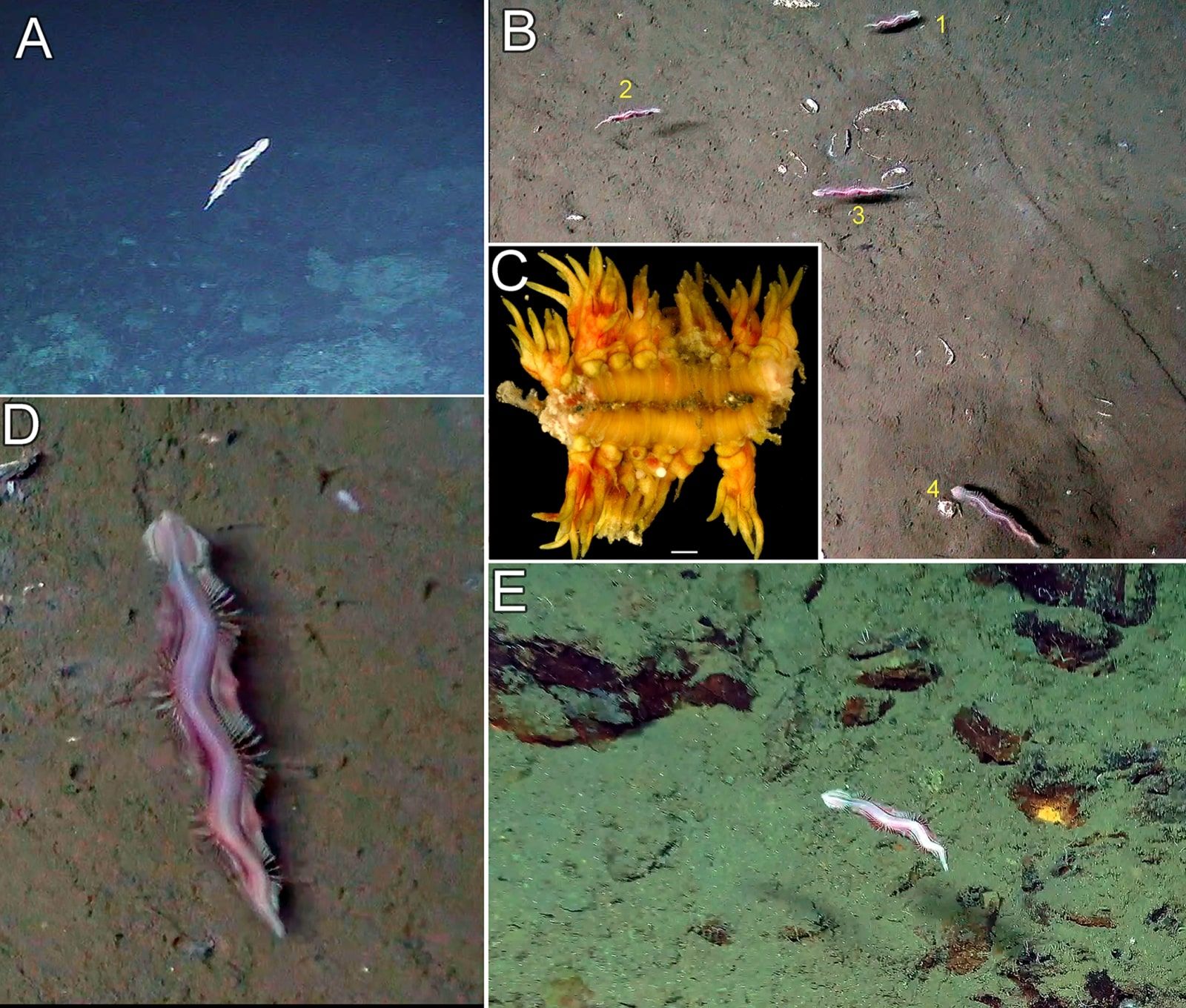Follow us on Google News (click on ☆)
It has been named Pectinereis strickrotti, marking the 48th new species discovered thriving around methane seeps off the coast of Costa Rica – an environment once considered too inhospitable for life to survive. The discovery, according to a team led by marine biologist Greg Rouse from the Scripps Institution of Oceanography, reveals how little we understand the oceans of our planet, and the wild diversity they contain.

Various specimens found near methane sources off the coast of Costa Rica at a depth of about 3,280 feet. The images come from the Woods Hole Oceanographic Institute and the Schmidt Ocean Institute.
"We've spent years trying to name and describe the biodiversity of the ocean depths," states Greg Rouse. "At this point, we have found more new species than we have time to name and describe. This simply goes to show how much unknown biodiversity exists. We need to continue to explore the ocean depths and protect them."
The ocean depths are completely hostile to humans. Between the crushing pressure, icy temperatures, and lack of light, it is very difficult for us to access. So, there's a lot we don't know about the deepest parts of the ocean; we've only explored 5% of the world's oceans and cataloged about 10% of the life found in the depths.
"But where humans fear to venture, we are developing technology to forge ahead." Rouse and his colleague Bruce Strickrott, the chief pilot of the deep submersible Alvin for whom the worm is named, first encountered the new species at a depth of about 3,280 feet in 2009 during a manned dive off the coast of Costa Rica. However, the researchers had startled the animal in attempting to approach it and had been unable to collect it. In 2018 they managed to encounter this same creature again and were able to collect images, videos, and even specimens.
The collection revealed that they were dealing with a new species of marine worm belonging to the family of Nereididae, also known as sandworms. Like other members of the family, P. strickrotti is a segmented polychaete worm with an elongated body whose sides are lined with leg-like appendages called parapodia and hidden jaws that emerge to feed.
In several very interesting ways, P. strickrotti differs from other known sandworms. To begin with, most known sandworms inhabit much less deep waters. Because it lives in the bathypelagic darkness, P. strickotti is blind. Furthermore, most known sandworms absorb oxygen through their parapodia without the aid of gills, while the parapodia of P. strickrotti are covered in gills.
In general, Nereididae have two life stages: the immature atoke stage where they spend most of their life in a burrow on the seafloor; and the epitoke adult stage that emerges and swims freely to reproduce before dying. Since most of the collected specimens here were freely swimming males, and the only (partial) female sample was taken in sediment, the team suspects that in this species, only the males might become epitokes.
It is still unknown what this creature feeds on, although studying the chemosynthetic food web that emerges around methane seeps might help to discover it. The discovery of this particular worm gives us a glimpse into the vast abyss of our own ignorance and the strange wonders of this world that are just waiting to be discovered.